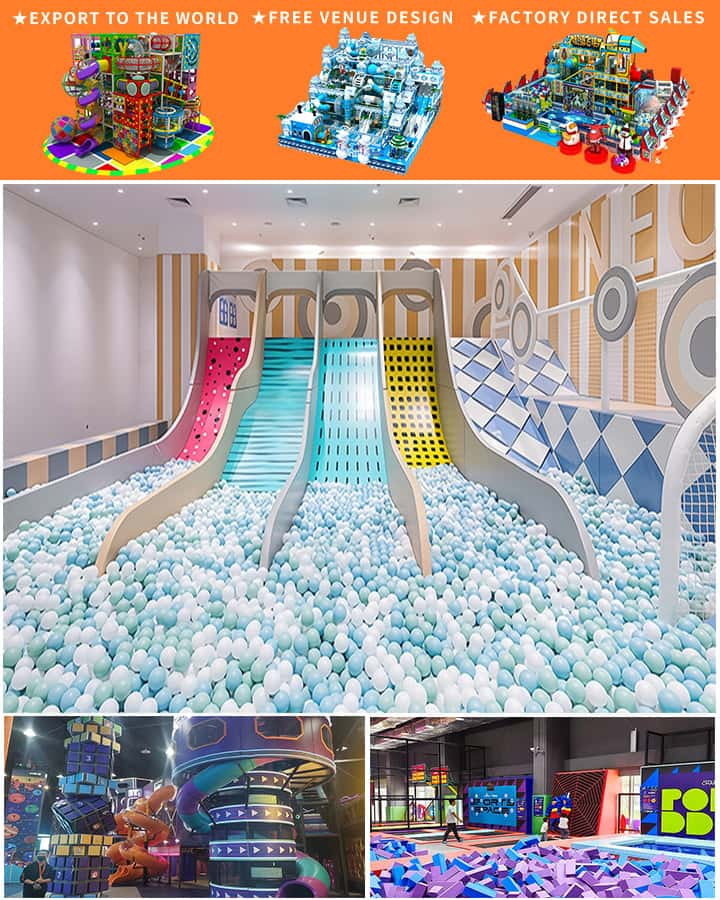Creating a fun and safe indoor playground can be a significant investment, but the benefits of providing a year-round recreational space for children are substantial. Understanding the costs associated with developing an indoor playground is essential for budgeting purposes, ensuring financial viability, and making informed decisions. This guide delves into the various factors that influence the cost of setting up an indoor playground.
Initial Planning and Design
The journey to establishing an indoor playground starts with meticulous planning and design. The cost can vary greatly depending on the scale and complexity of the project. Hiring professional architects and designers specializing in recreational spaces is often necessary. Their fees can range from \(5,000 to \)20,000 or more, influenced by the size and unique requirements of the project.
Facility Acquisition or Construction
A crucial expense is the acquisition or construction of the facility itself. Renting a space typically involves monthly payments ranging from \(2,000 to \)10,000, depending on the location and size. Purchasing land for construction can cost between \(10,000 to \)50,000 per acre, with building costs ranging from \(100 to \)300 per square foot for new constructions. Renovating existing structures can also be costly, with prices varying based on the extent of the renovation needed.

Indoor Play Equipment
The heart of any indoor playground is, naturally, the equipment. The variety and quality of play structures significantly affect costs. Basic modular play systems may start at around \(10,000 to \)30,000. Custom-designed climbing walls, slides, ball pits, and interactive installations can push expenses upwards of $50,000. Safety is paramount, so investing in high-quality, durable materials is essential.
Soft Flooring and Safety Surfacing
To cushion falls and ensure child safety, specialized flooring such as rubber mats or foam tiles is necessary. These materials can cost between \(5 to \)15 per square foot. Larger areas will require more extensive investments, adding several thousand dollars to your budget.
Installation and Assembly
Professional installation of the playground equipment and flooring is vital for both safety and longevity. Installation costs can range from \(5,000 to \)20,000, depending on the scope of work. This expense includes labor, transportation, and any additional safety features that need to be integrated.
Permits and Inspections
Before opening your indoor playground, you will need to acquire the necessary permits and undergo inspections. Fees for permits can vary widely by location but typically range from \(500 to \)2,000. Inspections might incur additional costs, especially if revisions are required to meet local safety regulations.
Operational Costs
Once your indoor playground is operational, ongoing expenses include staff wages, utilities, maintenance, insurance, and marketing. Staff wages alone can range from \(20,000 to \)60,000 annually, depending on the number of employees and regional salary standards. Utilities might add an extra \(5,000 to \)15,000 per year. Insurance policies tailored for recreational facilities often run between \(3,000 and \)10,000 annually. Marketing efforts, including digital advertising and community outreach, can further add to these costs.
Conclusion
Establishing an indoor playground is a multifaceted venture with diverse cost components. From initial planning and construction to ongoing operational expenses, a comprehensive understanding of these financial aspects is crucial. While the initial investment may seem high, the long-term benefits of creating a consistent revenue stream and providing a valuable community resource make it a worthwhile endeavor. With careful planning and prudent financial management, owning an indoor playground can be a rewarding and profitable business.




